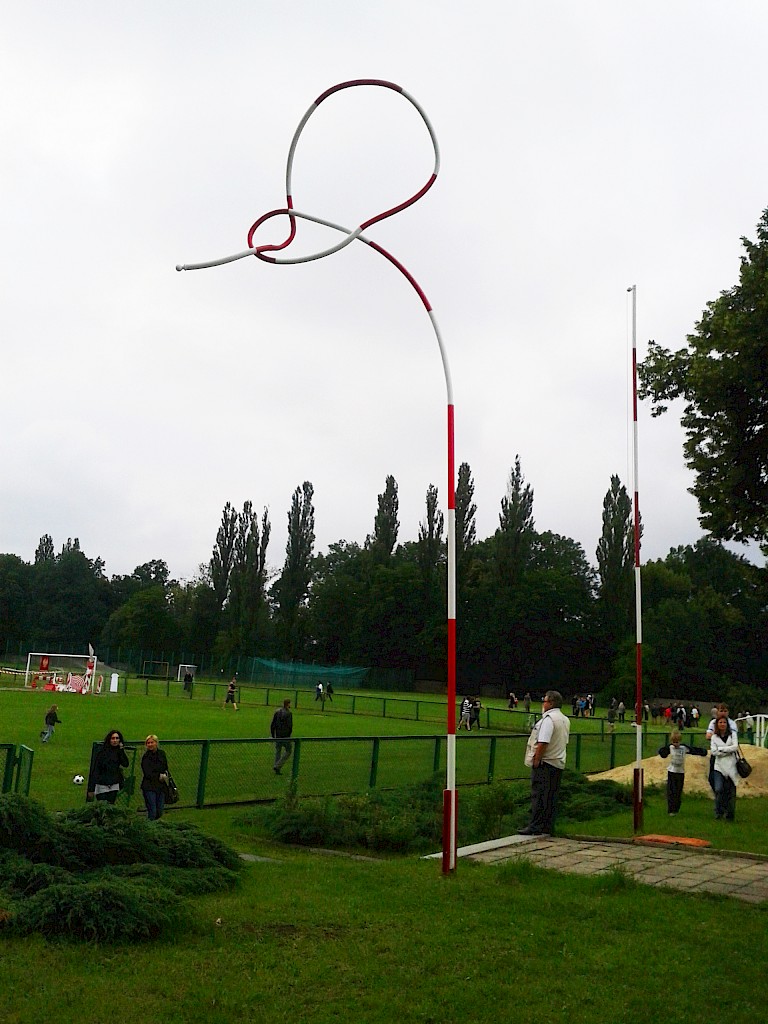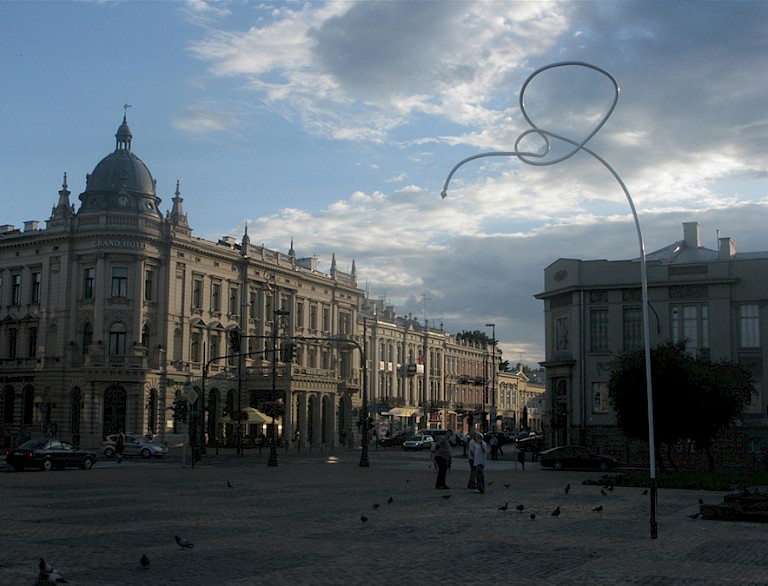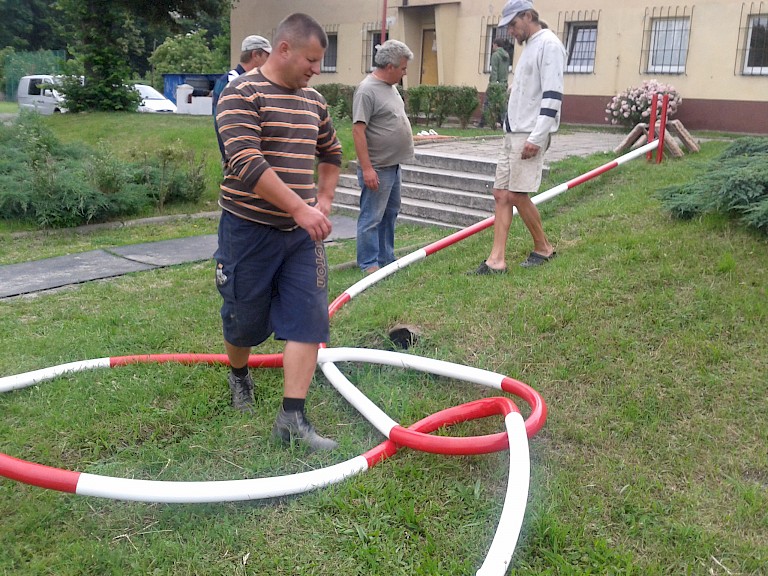



Kamila Szejnoch reaches to the area where official historical signs enter the reality of contemporary daily life, in which they are no more but distorted instruments for the support of certain political ideas. They are concentrated all in one square of a city where one may still find medieval walls, as well as the remains of Majdanek (KL Lublin), a large Nazi German concentration and extermination camp. The artist supplements this area with an object that imitates a basic tool for supporting a dominant political idea — that is, a flagpole. In addition to that, Kamila goes for even more straightforward realism, and shows this instrument as a deformed and bended entity that bears nothing, as a flag is nothing but an idea of power that marks and tries to control the public space. In the end, all the monuments in Lithuanian Square mark historic power representations that do not exercise themselves anymore, but they stay in public space, educating people who get there about the history of the city and country. The artists playfully contributes to this education process, making one pay attention to the idea of political objects that turn into empty signifiers in public space, that is, in the realities of everyday life in the city.
Further on, Kamila Szejnoch has developed the symbolic concept of the “Flagpole” in its relation to contemporary events. In 2012 she created the “Euro Flagpole”, a similar installation in the context of the Euro Cup 2012 in Poland and Ukraine, addressing cultural and geopolitical issues often hidden within big commercial sport events. One “Flagpole” was temporarily installed in Oławka Stadium in Wrocław (Poland). The second one became a part of the Main Project within an international festival for public art, Kyiv Sculpture Project 2012 (Ukraine). In both cases Kamila’s work hinted at the idea that mass events become platforms for ideological promotion, covering up the idea of political processes behind them.
The artist brings humour into spaces identified by state politics, and this slight distortion helps a person crossing the square, passing a stadium or strolling in a park, to see that the space of the city is not politically neutral, it contains memories and ideas. When a ‘flag’, a component of power, is removed, one grasps a new dimension of the space they inhabit, which dissolves, at least temporarily, the air of negative estrangement in today’s city life.
The project has sharp conceptual and formal features. It managed to become an important part of the public space of Lublin, and a catalyst for reinterpreting the historical legacy of the city. In Wroclaw and Kyiv, “Flagpole” became an important social intervention available to broad public.
For the first time, “Flagpole” appeared as the artist's contribution to the Open City Festival held in Lublin. Its reception by the public and relevance to the context triggered the artist to repeat it on two other locations, in Poland and Ukraine, where it addressed a wider range of socio-political issues (which all are the factors for selecting “Flagpole” for IAPA). In all three cases the work has received municipal and institutional support.
All copyright belongs to Shanghai Academy of Fine Arts, Shanghai University.



